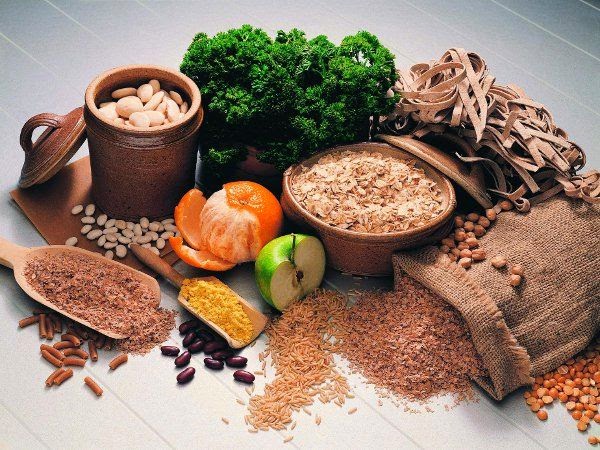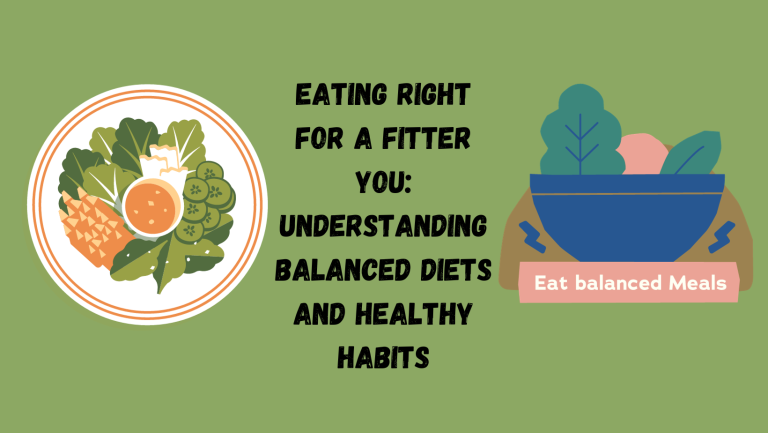Is macrobiotic diet good for weight loss?
Are you curious about a diet that not only helps with weight loss but also emphasizes balance and whole foods? Look no further! Today, we’re diving into the world of the Macrobiotic Diet, a fascinating way of eating that brings together ancient wisdom and modern healthy living practices.
What is Macrobiotic Diet?
The Macrobiotic Diet isn’t just about shedding pounds; it’s a lifestyle that aims to balance your energies. Imagine it as a culinary yin and yang! This diet originated in Japan and focuses on the principles of Yin and Yang balance, the core philosophy of this unique eating approach. The macrobiotic diet’s major principles and components are as follows:

- Balancing Yin and Yang: According to traditional Chinese philosophy, the macrobiotic diet strives to balance the yin and yang energy in the body. Yin is associated with cool, passive, and expanding attributes, whereas Yang is associated with hot, active, and contractive qualities. The diet focuses on finding a balance between these opposing energy.
- Whole Foods: The diet is composed mostly of whole, natural, and minimally processed foods. It promotes the consumption of locally grown and seasonally available produce.
- Plant-Based: A macrobiotic diet is predominantly plant-based, including grains, vegetables, legumes, and seaweed as staples. Whole grains, such as brown rice, barley, and millet, are dietary staples.
- Cooking procedures: Cooking procedures are chosen to enhance the yin and yang equilibrium. Steaming, boiling, and baking are common ways, with little or no usage of oil or frying.
- Local and Seasonal: Followers are encouraged to eat foods cultivated locally and in season, as they are thought to be more in tune with the environment and body.
- Processed Food Avoidance: Highly processed foods, refined sugars, and artificial additives are discouraged or avoided in the diet.
- Moderation is stressed throughout the diet, including portion amounts and meal frequency. Overeating and undereating are both discouraged.
- Mindful Eating: Practitioners are advised to eat consciously, relishing each bite and paying attention to hunger and fullness signs from the body.

Why is it called a macrobiotic diet?
Let’s break it down. The Macrobiotic Diet is all about whole foods and minimal processing. Think hearty grains, colorful vegetables, plant-based proteins, and a sprinkling of lifestyle practices that’ll keep you feeling great inside and out.
What foods can you Cannot eat on a macrobiotic diet?
It’s like a time machine! Discover the historical roots and how this diet evolved from traditional Asian wisdom, thanks to trailblazers like George Ohsawa and Michio Kushi. Their holistic vision for well-being shaped the Macrobiotic Diet as we know it today.
What do you eat in a macrobiotic diet?
We’re navigating the food map! Find out which foods are stars and which ones get the back seat. From emphasizing local and seasonal produce to saying “see ya” to processed foods, here’s the lowdown.
- Highly processed and refined foods, such as white sugar, white flour, and the majority of commercially processed foods, are generally avoided.
- Red Meat: Red meat is normally avoided or taken in small amounts. Some macrobiotic diet variations allow for limited amounts of lean, organic, and locally sourced meats, although it is not a major component of the diet.
- Poultry: Poultry, such as chicken and turkey, is typically restricted or prohibited.
- Dairy goods: Dairy goods such as milk, cheese, and butter are frequently avoided or consumed in moderation. Almond or rice milk are plant-based alternatives that can be used instead.
- Eggs: Although eggs are normally prohibited, some macrobiotic practitioners may use them on occasion in their diet.
- Caffeine: It’s usually advised to avoid or restrict coffee, black tea, and other caffeinated beverages. The best teas are herbal.
- Spices & Condiments: Eat less or use strong sauces and extremely spicy dishes sparingly. Rather, gentler flavors such as miso, ginger, and seaweed are preferred.
- Nightshade Vegetables: Because nightshade vegetables, such as tomatoes, peppers, and eggplants, are thought to have an adverse influence on the balance of yin and yang, some macrobiotic diets limit or eliminate their consumption.
- Sugary Foods: Eat less or avoid foods and drinks that have added sugar, such as candy, most desserts, and sweetened snacks.
- Alcohol: Although certain diets permit the occasional drinking of some alcoholic beverages, such as dry wine or beer, alcohol consumption is usually restricted or avoided.
Who should avoid macrobiotic diet? Is it for everyone?
It is a severe and inflexible diet in some cases, so it is not recommended for people who have any disorder that may be amplified in these cases. It is also not recommended in childhood and pregnant women, since they would not be ingesting all the nutrients necessary for their development and that of the fetus, nor in diabetics or people with other chronic diseases. In any case, you must consult with health professionals beforehand. However, if practised under normal conditions and well planned, without a professional indicating otherwise, it could help rebalance energy and, therefore, help you lose weight.
What do you eat in a macrobiotic diet?
Get ready to stock up your pantry! We’ve curated a list of superstar foods that play a leading role in the Macrobiotic Diet. They’re not just nutritious; they’re delicious too!
- Whole Grains: A major component of every meal, whole grains are the cornerstone of the macrobiotic diet. Brown rice, barley, quinoa, millet, and whole wheat are typical options.
- Vegetables: Rich in a variety of nutrients, vegetables are a staple of any diet. Leafy greens, sea vegetables (like nori, and wakame), root vegetables (like carrots, and turnips), and cruciferous veggies (like broccoli, and cauliflower) are frequently highlighted.
- Legumes: Generally included in diets, beans, lentils, and other legumes provide a good source of plant-based protein. Tofu, chickpeas, and adzuki beans are popular options.
- Seafood: A few macrobiotic diet variations call for a small amount of seafood, especially fish that is thought to be in harmony with the local ecology and the individual’s constitution.
- Fermented Foods: Consuming naturally fermented pickles, tempeh, and miso (soybean paste) is beneficial for the gut flora.
- Nuts and Seeds: For taste and nutrition boost, use small amounts of nuts and seeds (sesame, sunflower, and pumpkin seeds, for example).
- Fruits: You can incorporate fruits in moderation, especially if they are in season and farmed locally. Certain practitioners restrict the intake of extremely yin fruits, such as tropical types.
- Naturally Processed Foods: The best foods are those that have not been heavily processed. This comprises naturally occurring sugars like barley malt or brown rice syrup, lightly processed soy products, and unprocessed oils like sesame oil.

Are fruits macrobiotic?
We’re talking fruits! They’re nature’s candies, but in the Macrobiotic Diet, we’ve got a moderation game plan. Learn how to strike that perfect balance between sweetness and nutritional harmony. Taking into account fruits in a macrobiotic diet entails the following:
- Moderation: Fruits are thought to be more yin or expansive in nature, and macrobiotic diets frequently stress balance. Fruits are typically consumed in moderation to preserve equilibrium, and practitioners may opt to select locally cultivated and in-season fruits.
- Local and Seasonal: Applicators may favor fruits that are in season and grown nearby in accordance with the macrobiotic concept of eating locally and seasonally. This is seen to be in balance with both the demands of the individual and the surroundings.
- Fruit Types: Certain fruits are seen as more expansive or yin than others. For instance, tropical fruits are frequently thought to be particularly yin. On the other hand, less sweet and juicy fruits are usually preferred, such berries, pears, and apples.
- Mindful Consumption: The macrobiotic lifestyle promotes mindful eating, which involves observing your feelings when consuming various foods. You may decide to eat less fruits if you notice that they make you feel too “light” or out of balance.
- Food Combining: There are recommendations about the best way to mix foods for digestion and balance in certain macrobiotic diet variants. Fruits, for example, should be consumed apart from other foods to prevent gastrointestinal distress.
Seven days Macrobiotic diet plan for weight loss
You’re invited to our feast! Take a peek at a seven-day meal plan that’s packed with flavor, variety, and, most importantly, a roadmap for healthy eating that doesn’t skimp on taste.
Day 1:
Breakfast:
- Brown rice porridge with a tiny bit of grated ginger and sesame seeds added.
- Steam-cooked kale or spinach.
- A tiny portion of kimchi or sauerkraut.
Lunch:
- Yams or sweet potatoes baked.
- Seaweed and tofu in miso soup.
- A basic vinaigrette paired with a side salad of mixed greens and shredded daikon radish
Dinner:
- Cauliflower and broccoli cooked in steam.
- White fish baked or poached (if you eat animal products).
- brown rice.
Day 2:
Breakfast:
- oatmeal prepared with rolled oats, cinnamon, and sliced bananas on top.
- a bancha tea cup.
Lunch:
- Soba noodles with a daikon grating soy sauce and mirin dipping sauce.
- asparagus cooked in steam.
Dinner:
- Acorn squash baked and drizzled with tahini.
- soup made with lentils.
- a stir-fried mixture of vegetables with garlic and ginger.
Day 3:
Breakfast:
- Porridge made from millet or amaranth, flavored with a little maple syrup and diced apples.
- A kukicha tea cup.
Lunch:
- Stir-fried tofu and mixed vegetables over brown rice.
- A tiny portion of pickled veggies.
Dinner:
- Roasted or grilled eggplant.
- Curry with vegetables and chickpeas.
- Quinoa.
Day 4:
Breakfast:
- Sliced strawberries with almond butter on wholegrain bread.
- A mug of tea with roasted barley.
Lunch:
- Mashed sweet potato.
- Stew with veggies and lentils.
- Green beans, steamed.
Dinner:
- Portobello mushrooms baked and dusted with nutritional yeast.
- Barley or brown rice.
- broccoli in a steamer.
Day 5:
Breakfast:
- Slices of tomato and avocado are placed on top of rice cakes.
- A hojicha tea cup.
Lunch:
- Noodles made of Buckwheat, flavored with a miso broth and a ton of vegetables.
- A pickled cucumber salad on the side.
Dinner:
- Tempeh marinated in tamari and sesame oil then baked or grilled.
- Brown rice or quinoa.
- Bok choy steam-cooked.
Day 6:
Breakfast:
- Almond milk chia pudding garnished with a variety of fruit.
- A genmaicha tea cup.
Lunch:
- Kabocha squash steaming.
- A stew with vegetables and lentils.
- Mixed greens with a dressing made of tahini.
Dinner:
- Roasted Brussels sprouts topped with a balsamic vinegar glaze.
- A stir-fried mixture of vegetables and tofu.
- Barley or brown rice.
Day 7:
Breakfast:
- Almond milk combined with sliced bananas and wholegrain cereal.
- A kukicha tea cup.
Lunch:
- Quinoa salad with bell peppers, chopped cucumber, and dressing made of lemon and tahini.
- Broccoli in a steamer.
Dinner:
- Root vegetables (carrots, beets, and turnips) roasted.
- Chili with black beans and vegetables.
- Sorghum or millet.
Conclusion: Taking a Bow and Embracing the Macrobiotic Way
Time to wrap it up! We’ll recap the essence of the Macrobiotic Diet, encourage mindful eating, and highlight why your wellness journey is unique and significant.
So, young explorers, are you ready to step into the world of the Macrobiotic Diet? It’s more than just a diet; it’s a lifestyle that champions balance, health, and a deliciously diverse way of eating. Come join us on this exciting adventure! 🌱🍚🥦








